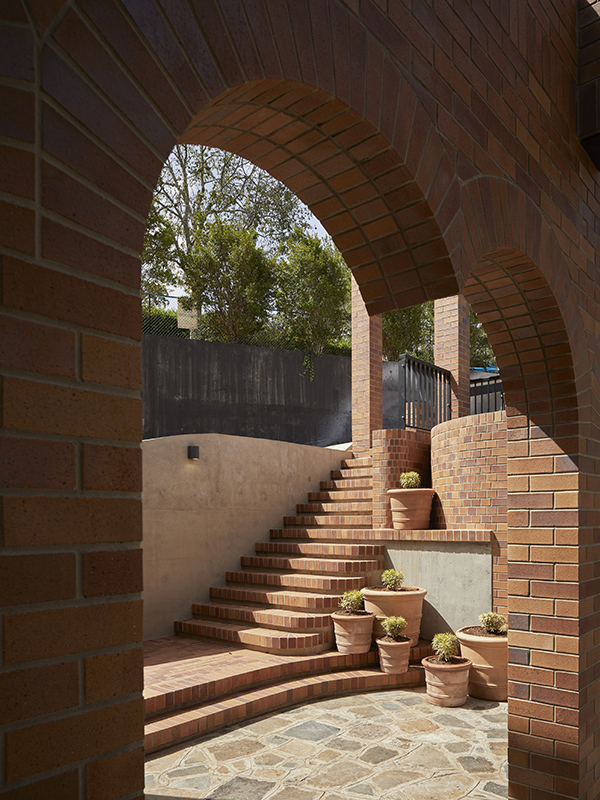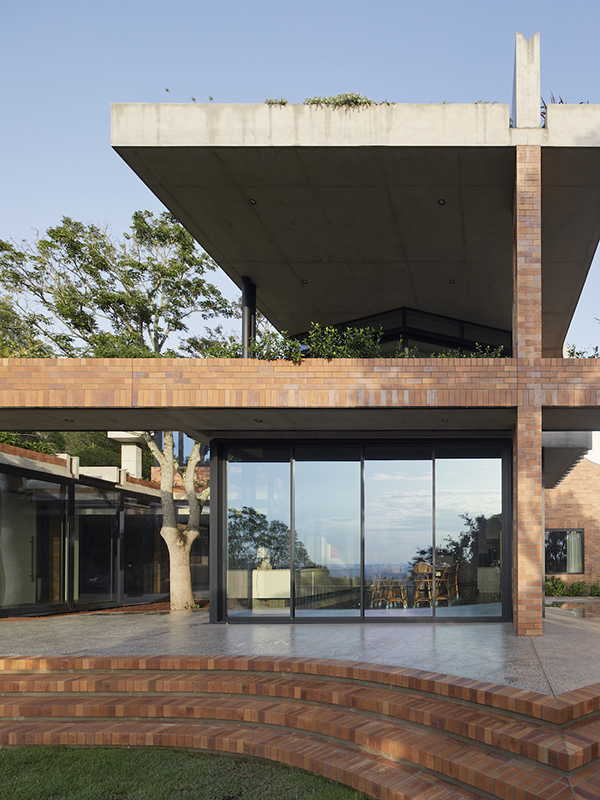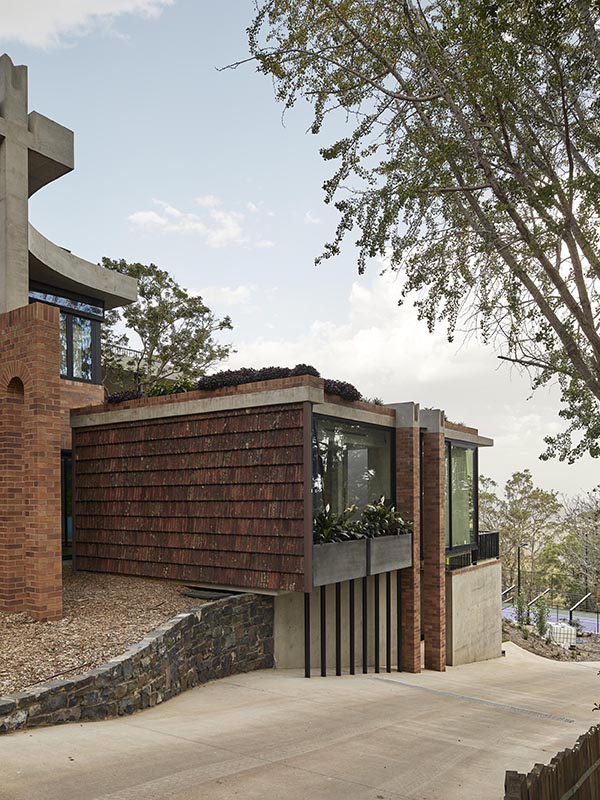Typically associated with suburban Australia, red brick is synonymous with the working class identity of mid-20th century Australia. Simple, practical and functional abodes that sit proudly within the suburbs of Australia, redbrick is the telling feature of many of these homes that raised many a generation within their walls.
In this instance though, the humble red brick has been utilised in a fashion that seems beyond its contemporary setting, but to incredible effect. The Tjuringa House, designed by architectural duo Jesse Bennett Studio, is an adaptable family home that conjures the essence and character of the previous existing home, and applying it in a new fashion.
Designed for a family who had recently moved in, Jesse Bennett wanted to draw off the notion of a Tjuringa artefact, an object of religious significance in First Nations culture. Either a timber or stone carved long oblong-shaped stick, the carvings communicate mythological dreaming, stories of man and great mythical beings.

The original homestead, erected in 1954, proved to be the basis of the design. While the interior has been completely overhauled, the outside remains true to its roots, with many features of the English Arts and Crafts-inspired exterior still remaining. Unfortunately, the original walls of the house were not structurally sound, and had to be replaced. Thankfully, many of the walls materials were recycled, and were used for the new structures.
Perched above a hill in Cairns, the house has been primed by the architects to maximise its position. The programme bunkers down into the hillside and utilizes the brick structure as a place of refuge, housing many private and secret spaces to the West, and opens out to the Eastern view side to embrace the morning sun and entertain guests.
The master bedroom opens up to the view outside its glass walls, and receives copious amounts of sunlight as a result. Additional new concrete and glass structures pop out of the old brick perimeter on the Eastern side to take advantage of the expansive valley views and survey well established garden acres.

The landscaping resonates with the house, with redbrick finished steps and stone-like surfaces allowing for a carefully constructed exterior design that doesn’t overstep the mark. Many roof gardens and plantings were given priority throughout the design and have been planted to deliberately soften the hard edges and become overgrown, creating intrigue and delight, a relic to be discovered, explored and reinterpreted.
Terracotta tiles line many of the exterior walls outside, and prove a unique and nostalgic design touch that reflects the aims of the architects beautifully. Terracotta pots sit in assorted places amongst the courtyard, with both rustic features of the exterior congruent with the redbrick, dreamtime-like theme of the house.

Designed to combat the Toowoomba Westerly that could potentially plague the house atop the hillside, there is a concrete roof cap that seemingly floats over the structure. Sweeping and stretching as a fluid canvas, the cap is suspended between 5 monumental scale columns. As well as preventing the house being exposed to heavy breeze, it doubles as a shielding object, that alleviates overlooking into the house from the trafficked road above.
The Tjuringa House has been crafted out of nostalgic materials and complemented by flora that will ultimately create an open-ended story for generations to come. To view more photos of this architectural wonder, head to jessebennett.com.au/tjuringa.

